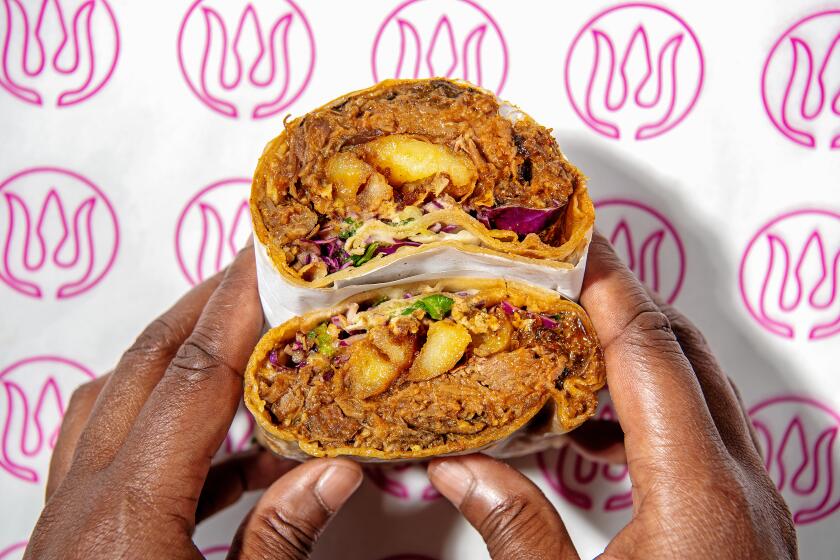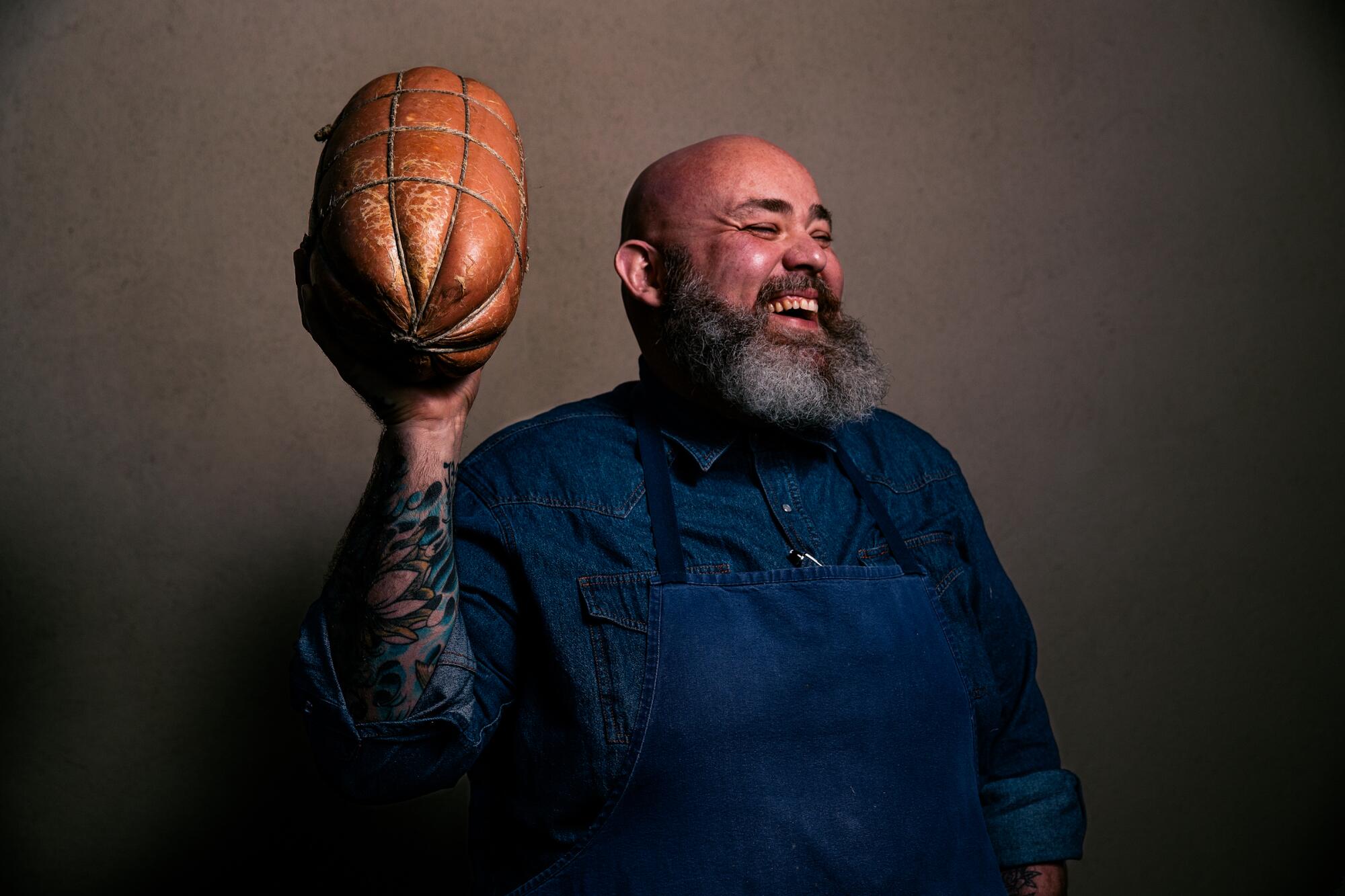
- Share via
Rounds of sliced-thin, pink, white-speckled mortadella are popping up on sandwiches, on charcuterie plates and even in the occasional cocktail in Los Angeles, but it’s hard to view any food item depicted in ancient Roman carvings as a flash in the pan. The Italian deli meat that traces its roots to Bologna and as far back as the Etruscans isn’t new, but of late it’s been gaining the kind of star power that salami and prosciutto have hogged for too long.
At Grandmaster Recorders the aromatic deli meat is draped gently around piping hot, freshly fried cacio e pepe-flavored zeppole (doughnuts) all buried under freshly grated pecorino. At Pizzeria Bianco, it takes sandwich form on a round of focaccia with goat cheese and arugula, while La Sorted’s showcases the thin slices on even fluffier focaccia with burrata and a slick of slightly sweet pistachio cream. It’s served as an option on the cured-meat plate at Capri Club, a new addition to the best bars in L.A., and cocktail bar Thunderbolt even recently experimented with crafting a cocktail employing the deli meat, creating an old-fashioned that featured mortadella-washed bourbon.
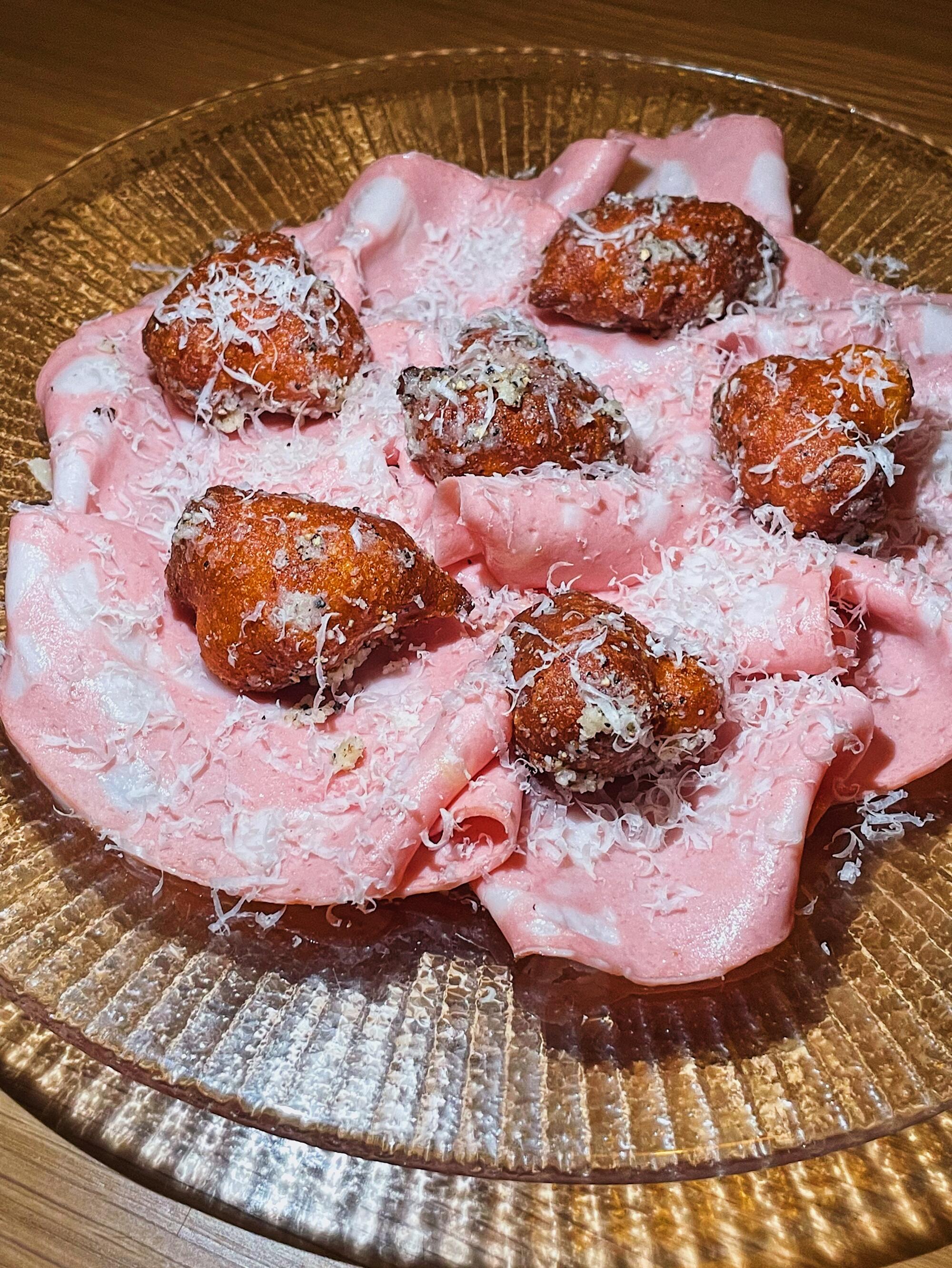
Mortadella — a popular cold cut throughout Italy for centuries — is making meaty waves in the U.S., where a maligned derivative, bologna, lacks the nuance in texture and flavor of its inspiration. A blend of pork cuts and fat, originally ground together in a mortar in the Emilia-Romagna region, mortadella is essentially a large cooked pork sausage spiced with myrtle, garlic and pepper. In 1998, it received its own Protected Geographical Indication — meaning its ingredients and methods must adhere to a strict set of criteria to be considered authentically regional. L.A. chefs and diners have taken note of the appeal of mortadella.
From the James Beard Foundation award semifinalists announced today, nominees for the annual restaurant and bar awards will be revealed on March 29.
To Felix and Mother Wolf chef Evan Funke, mortadella’s time was long overdue. “I f—ing love mortadella,” he says. “I think it’s great that L.A. is having a moment, but Mortadella is the moment, always has been. I think it’s one of the most underrated salumi to come out of anywhere in the world; it’s underutilized, underappreciated, super versatile, and I think it’s the best, so I love that it’s getting a little bit of traction.”
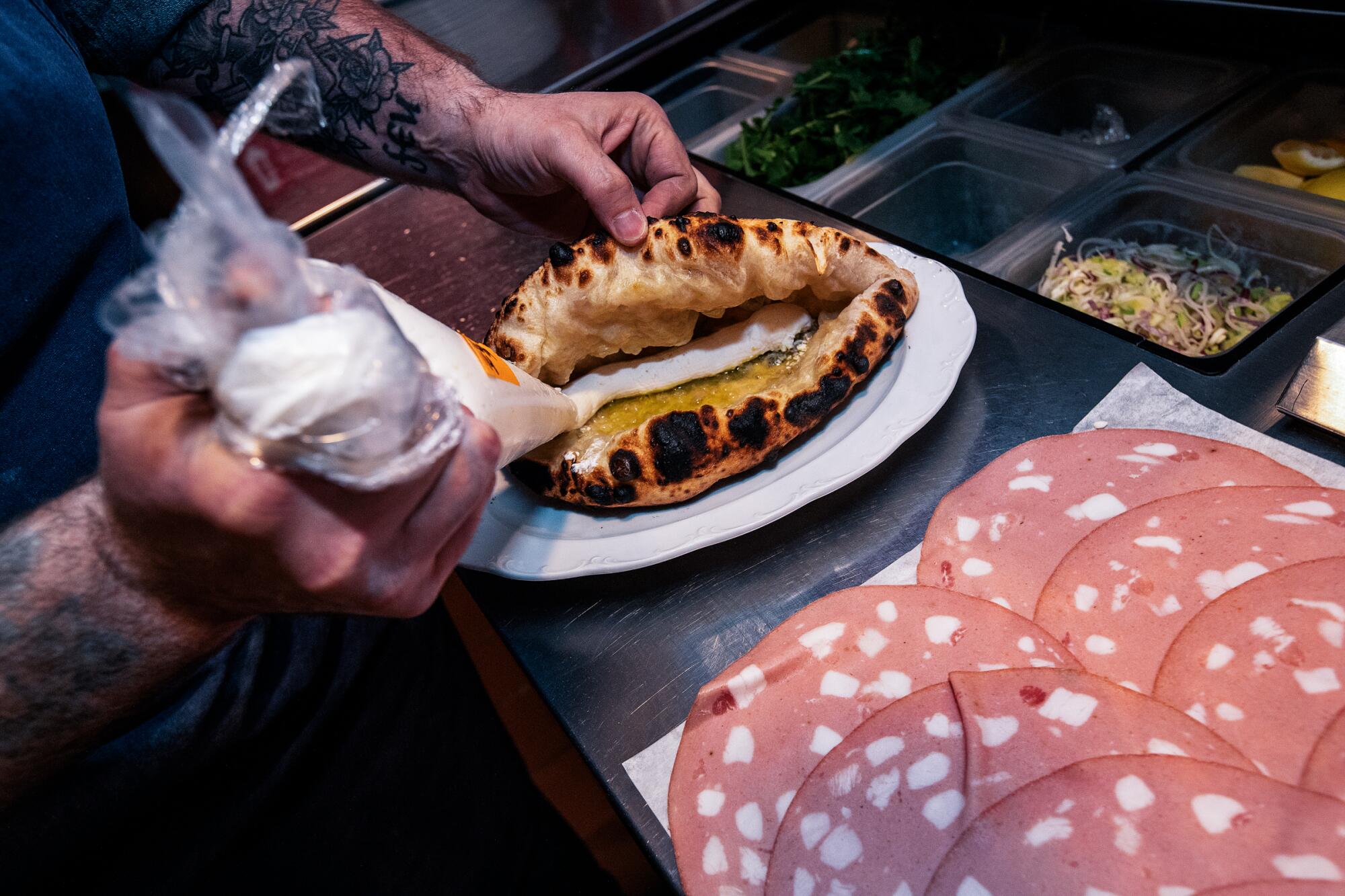
At Mother Wolf, Funke features mortadella made by Verona-based Leoncini, which adheres to the PGI regulations, on La Mortazza: a kind of inverted Napolitano pizza dough that results in a pillowy interior and a lightly crisp exterior. It forms an almost sandwich-like base for mortadella, which ribbons out in folds along the edge, and for lemon-scented ricotta, drizzled with lemon agrumato, sprinkled with cracked black pepper and scattered with pistachios.
When the chef moved to Bologna in 2007, the extent of his knowledge was that mortadella could be found in the Godmother sandwich at Bay Cities. That year marked the first time that he tasted mortadella di Bologna, which doesn’t include pistachios (a more modern addition — and an unwelcome one by a wide sect of mortadella purists).
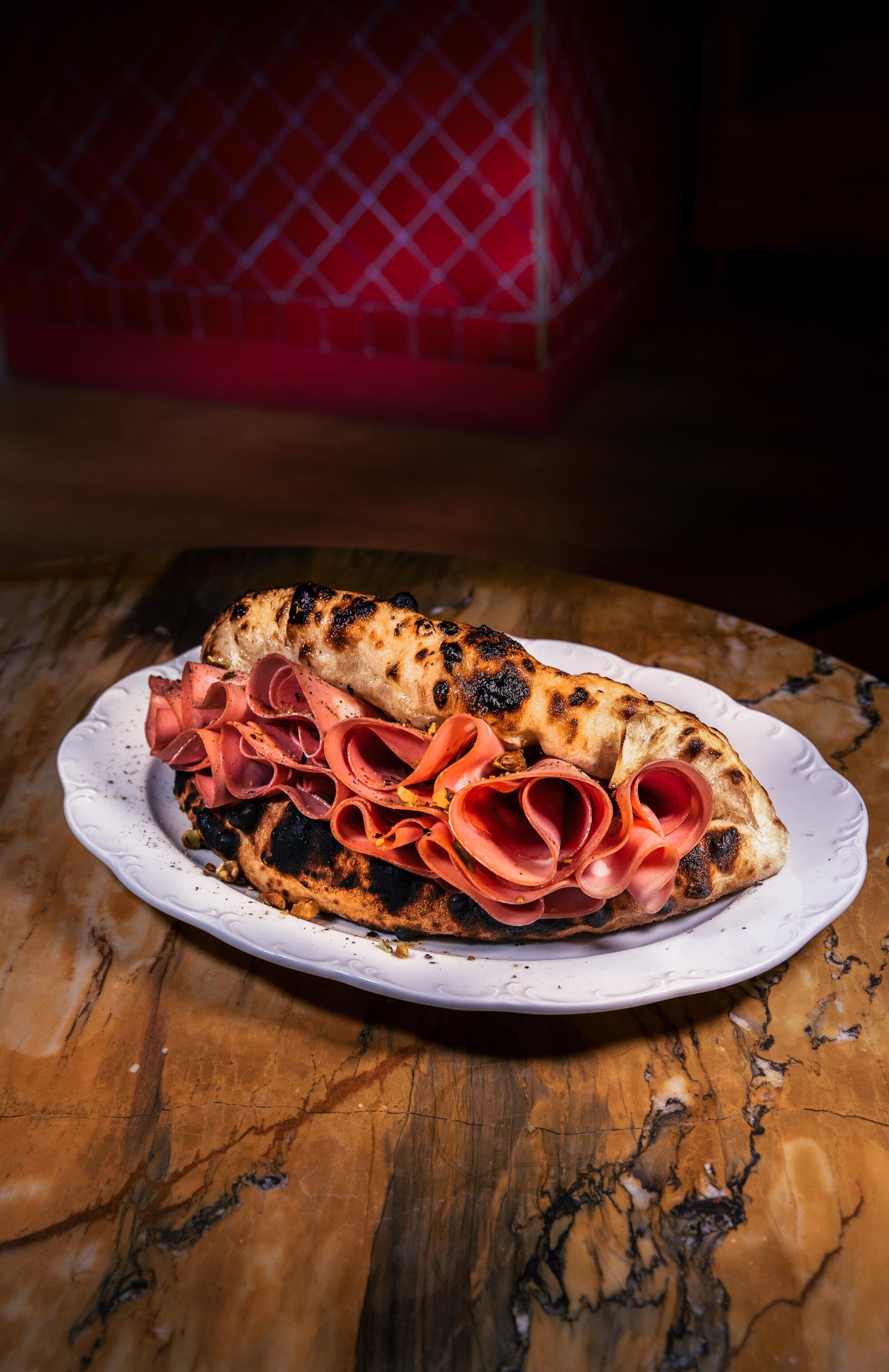
Once, while training with Alessandra Spisni at the School of Sfoglia Bolognese Traditional Cuisine, Funke saw her vendor send mortadella studded with pistachios; the chef-instructor immediately called upon all the saints in heaven and cursed her vendor. She was so mad, Funke says, she immediately sent it back and said, “This is not mortadella, it has pistachios in it. That’s Sicilian.”
From East Coast-style delis to Israeli-inspired sabich, L.A.’s rising sandwich scene reflects global influences and makes good use of seasonal produce.
While some skew traditionalist, mortadella’s variances have been embraced across continents, giving the meat even more audience as it made its way into a range of cultures. Late 19th century Italian immigrants in Brazil made mortadella a staple for pockets of South America, later proving a childhood mainstay of restaurateur John Borghetti, co-owner of Los Feliz’s Nossa Caipirinha Bar. Last summer Borghetti informed chef-partner Rory Cameron that he regularly ate mortadella sandwiches when growing up in Brazil, and Cameron knew he wanted to add one to the new bar’s menu.
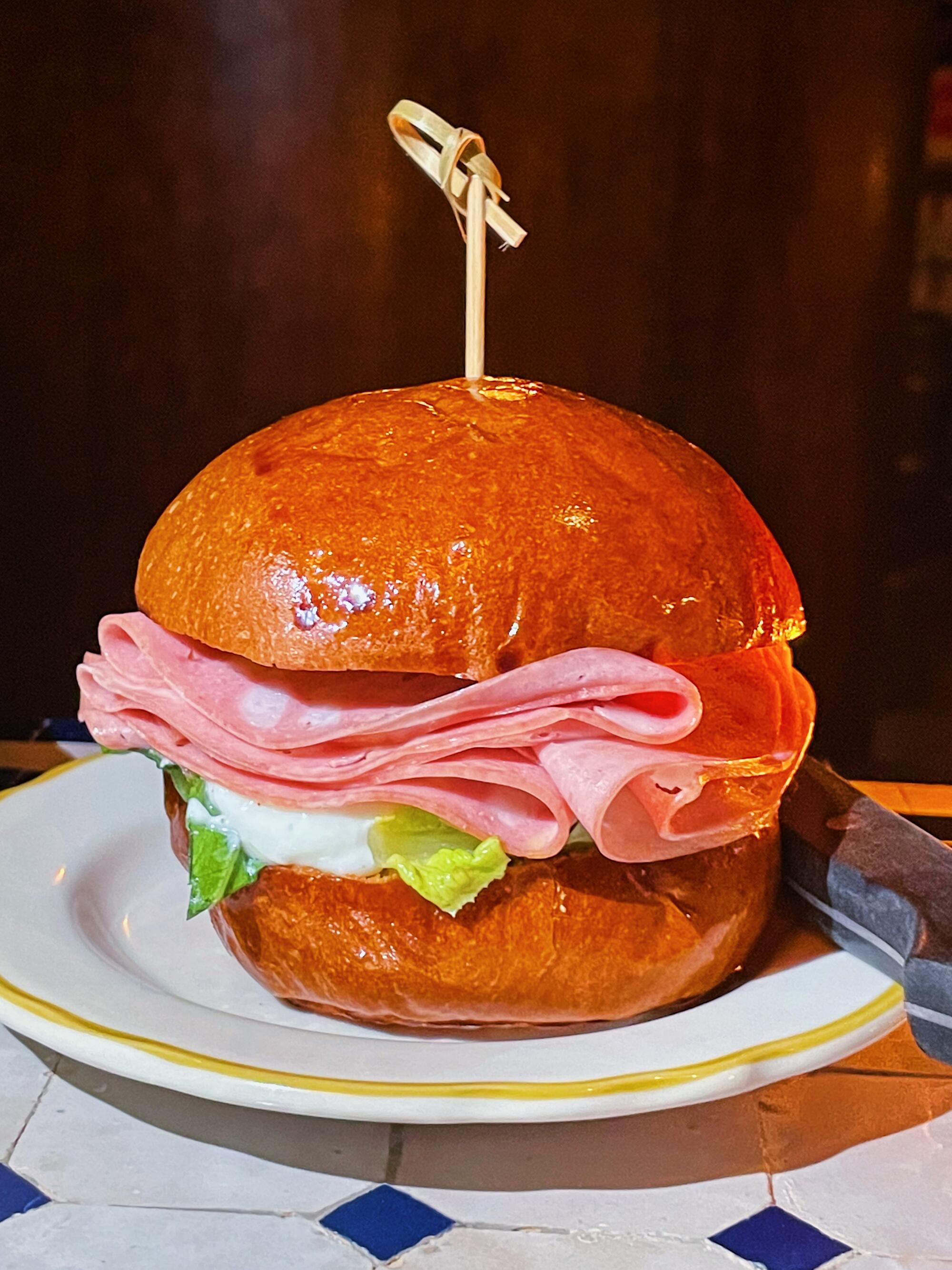
Cameron tasted four or five varieties of mortadella, ordering whole, deli-sized tubes at a time, and landed on maker Fra’Mani in Berkeley. It’s served on a locally made, toasted Homeboy Industries bun and gets topped with burrata. Biquinho peppers and their juice are incorporated into mayo that’s slicked over the bun, while chopped guindilla peppers form a kind of slaw for crunch.
That cross-cultural appeal is a benefit for Travis Hayden, one of the few chefs in Los Angeles making his own mortadella.
“You find it in Brazil, or Portugal has a version of it, or France or throughout Italy,” he says, “which is nice because it gives me some leeway.”
At Virgil Village wine bar Voodoo Vin, Hayden drapes several slices over one another on a plate, pistachios and fat on full display, brightened by whatever pickled peppers he’s sourced from the farmers market. The recipe is always evolving but is now roughly one year in progress and often involves splashes of dry white wine and spices such as nutmeg, coriander and mace.
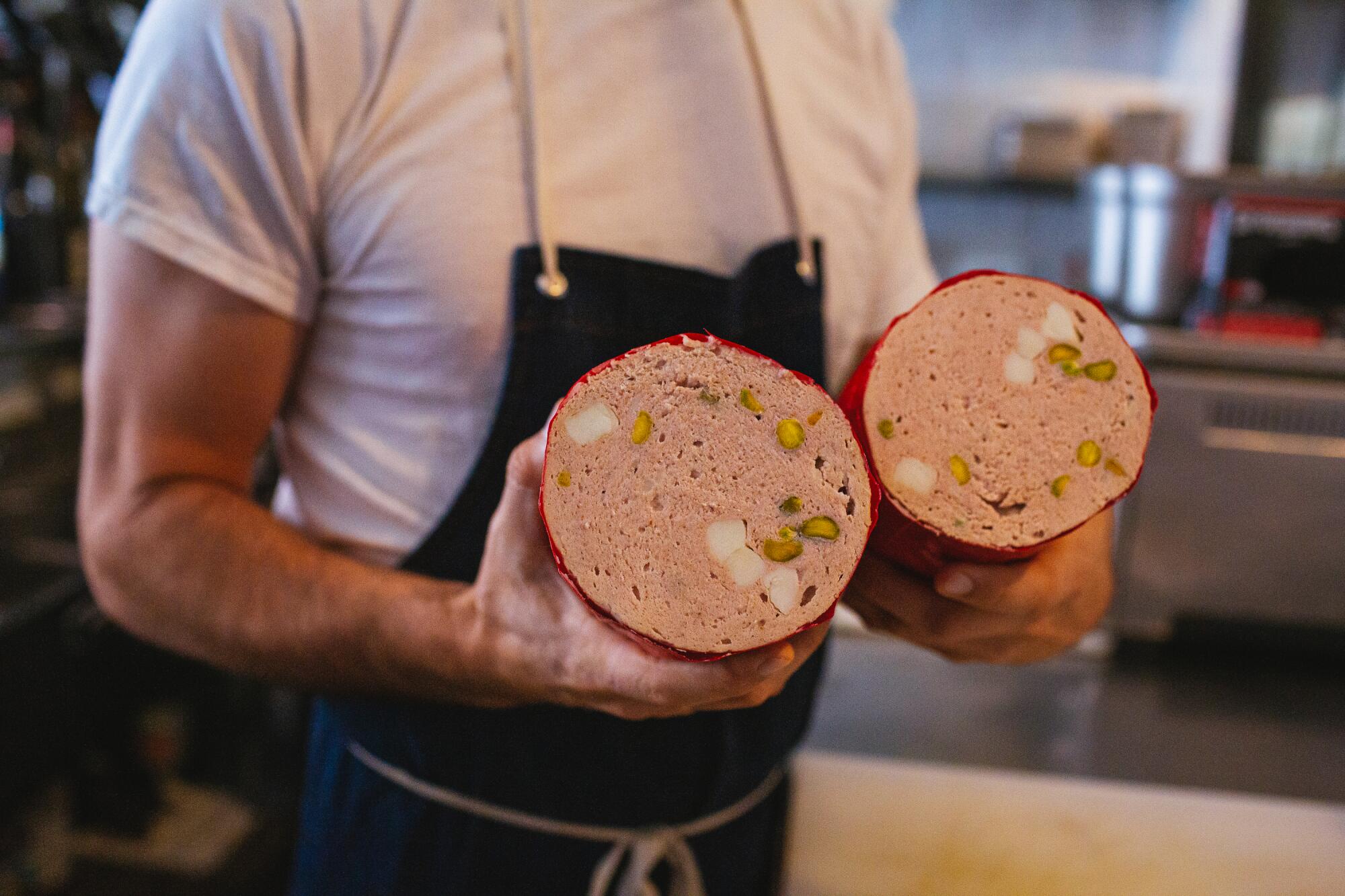
Hayden began with small batches. Then he needed to scale up. At first, one of his larger batches would last three weeks. Now he makes a large loaf roughly once a week — weighing in at around eight pounds — but he runs through it in just four or five days.
“People have started talking about mortadella,” Hayden says. “It’s like the tinned fish of charcuterie.” Some nights nearly every table orders the mortadella, despite multiple other varieties of house charcuterie also being available.
It takes Hayden about eight hours to prepare mortadella: He weighs out and either grinds or slices pork shoulder and fatback, all from heritage-breed pig farm Peads & Barnetts. He blanches the pistachios, then peels them from their casing by hand, which takes about an hour and a half. He measures out the wine and dry components, readying his station and finally setting his high-powered mixer in motion.
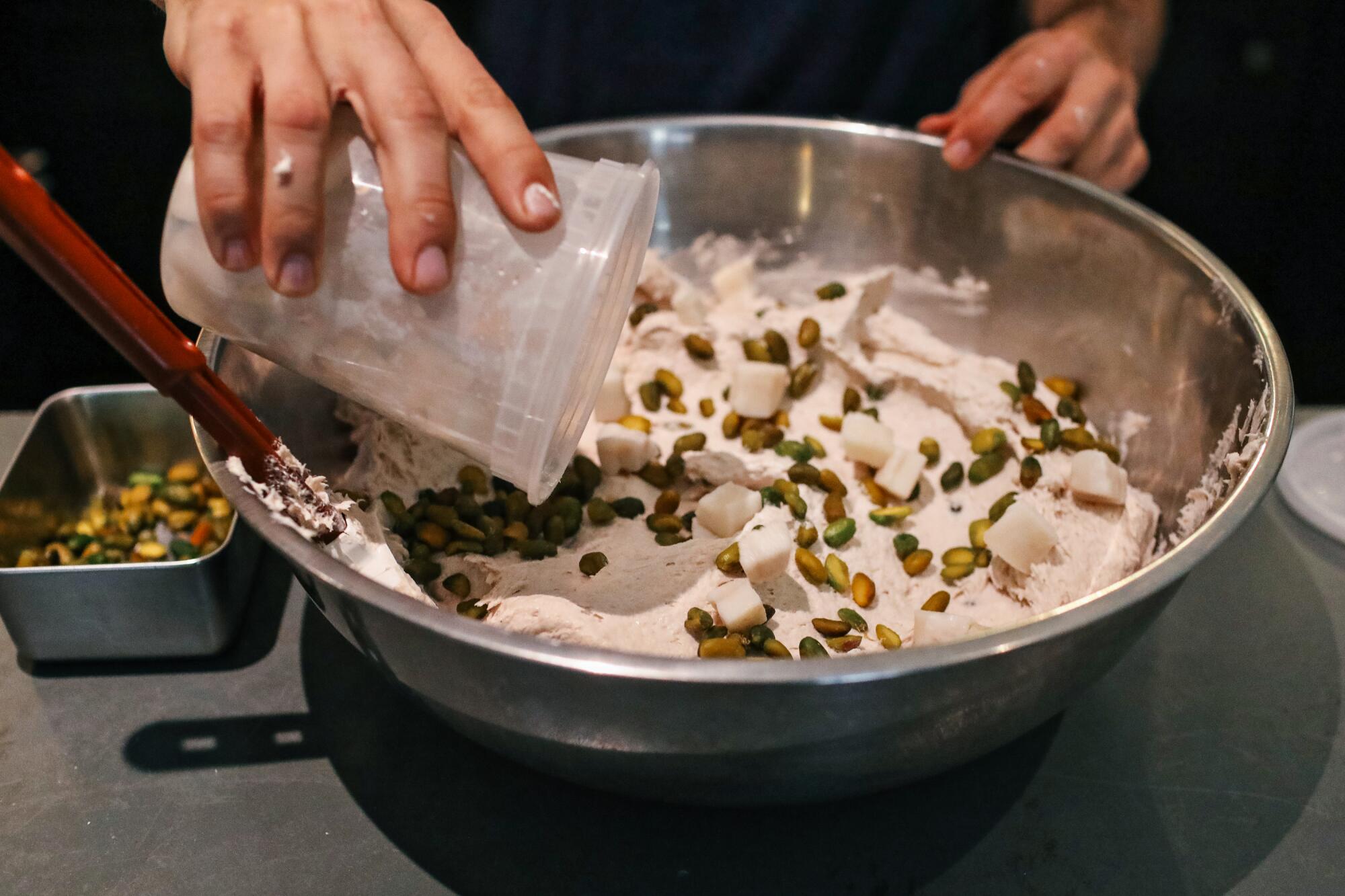
He begins by emulsifying the pork meat, adding the garlic and wine. Then come the aromatics and spices, the milk powder and the fat. He pauses occasionally to take its temperature, ensuring his emulsification won’t break. The more the blades spin, the hotter it gets; he adds ice, little by little, as the temperature climbs. As it spins, the emulsification turns from a bright pink to a creamy white and forms a kind of paste; it’s emptied into a large metal bowl, where he folds in the fat cubes and blanched pistachios.
Hayden unveils a large metal contraption to compress the sausage into the casing, where an airlock at one end pushes the air out, while an attached tube at the other extrudes the meat into the synthetic casing.. Without use of a full kitchen, he cooks the mortadella in a water-filled catering pan atop portable electric burners, slowly bringing the temperature up, then hangs it in the refrigerator for three days before it’s ready for the wine bar’s customers.
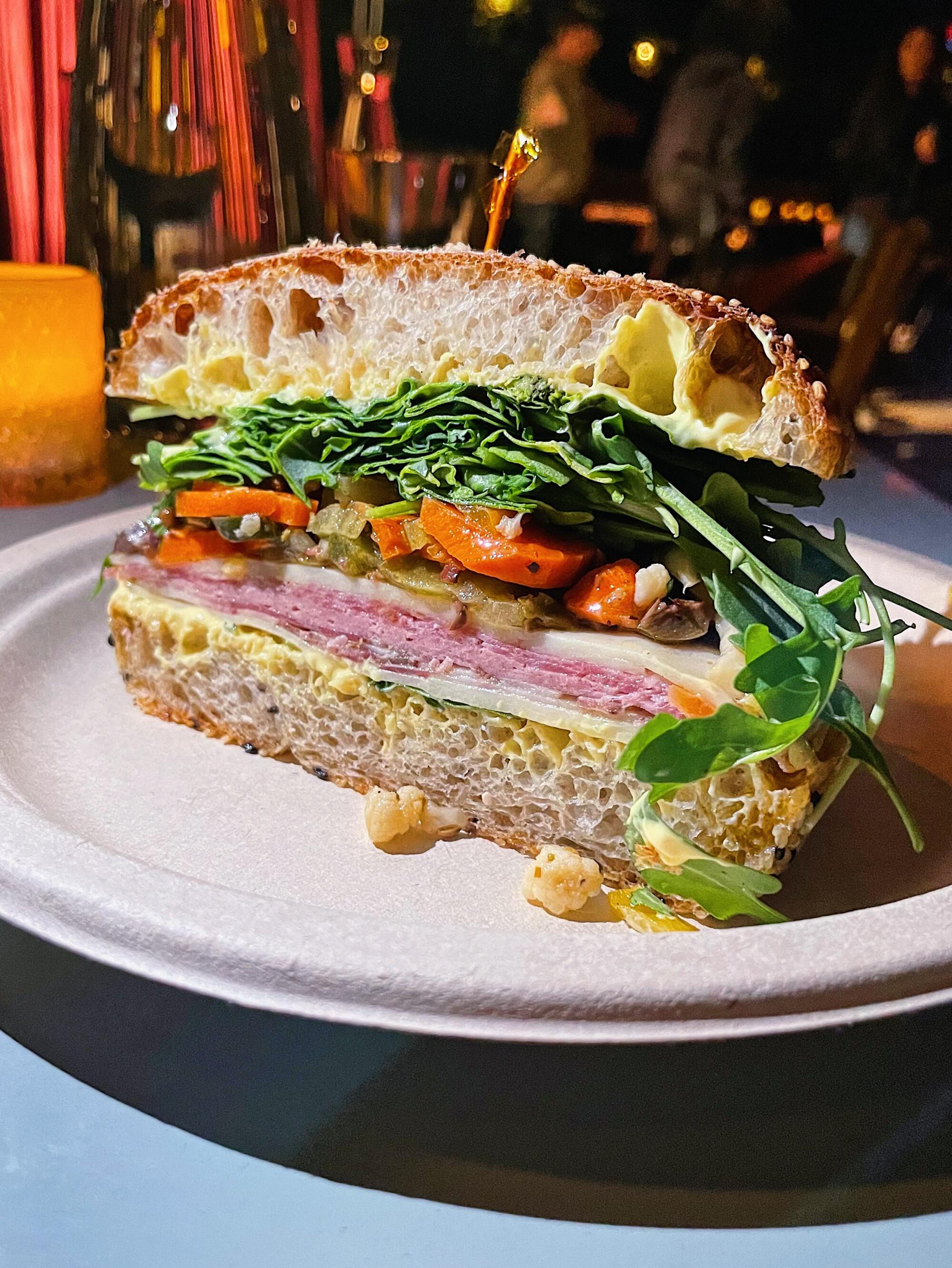
Shea Montanez, who refers to it as “kind of the next prosciutto frontier,” has gone through years of trial and error. The chef and co-owner of pop-up Happy Mediums Deli cut his teeth on charcuterie making during his time at Chicago’s Sepia. He gravitates toward mortadella due to its nostalgic nature, harking back to the old-school delis his grandma used to bring him to as a child.
At Happy Mediums — where he and his partner, Bonnie Hernandez, serve cheffy spins on classic sandwiches, soups, dips and other deli fare — he says his method is constantly developing. He grinds pork shoulder and fatback separately, so that the blend is fine, then adds spices such as mace, cinnamon, black pepper, garlic and cayenne. It’s served sliced thick on the McDuffuletta, the pop-up’s signature sandwich, along with house-made porchetta di testa and salami (the latter not made by Montanez).
Chef Samuel Schiffer’s been tracking the popularity boom of mortadella not only because he serves it in sandwich form at Pasadena shop Semolina Artisanal Pasta but because people have begun paying him for bright pink hats emblazoned with the word.
In early 2022 he co-founded pasta-focused apparel brand Mister Parmesan, and in August launched the “mortadella” hat in collaboration with illustrator Marianna Fierro. “The people who know, know,” he says. “The people who have mortadella inside of them already, whether figuratively or literally, you see people’s eyes light up unbelievably.” He’s jokingly started calling it “mortadellacore,” as if a kind of lifestyle.

For Semolina‘s sandwich, a citrusy pistachio aillade riff on a Suzanne Goin recipe is used to play up the pistachios in the Olympia Provisions mortadella. It’s served on a Bub and Grandma’s baguette with stracciatella cheese.
“As our regional Italian-food culture has become much more robust and more thoughtful, it’s that desire to be able to introduce people to something that might be unfamiliar,” Semolina owner Leah Ferrazzani says. “It’s a combination, to me, of: A bunch of East Coasters moved here in COVID, and then you have these chefs wanting to push the limit — it’s not particularly expensive so it’s not something that’s a huge risk financially, but it offers a lot in complexity and flavor and texture that you can play around with.”
As with any trend, no one can predict where the growing ubiquity of mortadella will lead. (Ferrazzani, at least, is waiting for guanciale have its mortadella moment — again.) Wherever it does, call it a phase with 1,000 years of global staying power, call it a flash in the pan or call it “mortadellacore” — just so long as you don’t call it bologna.
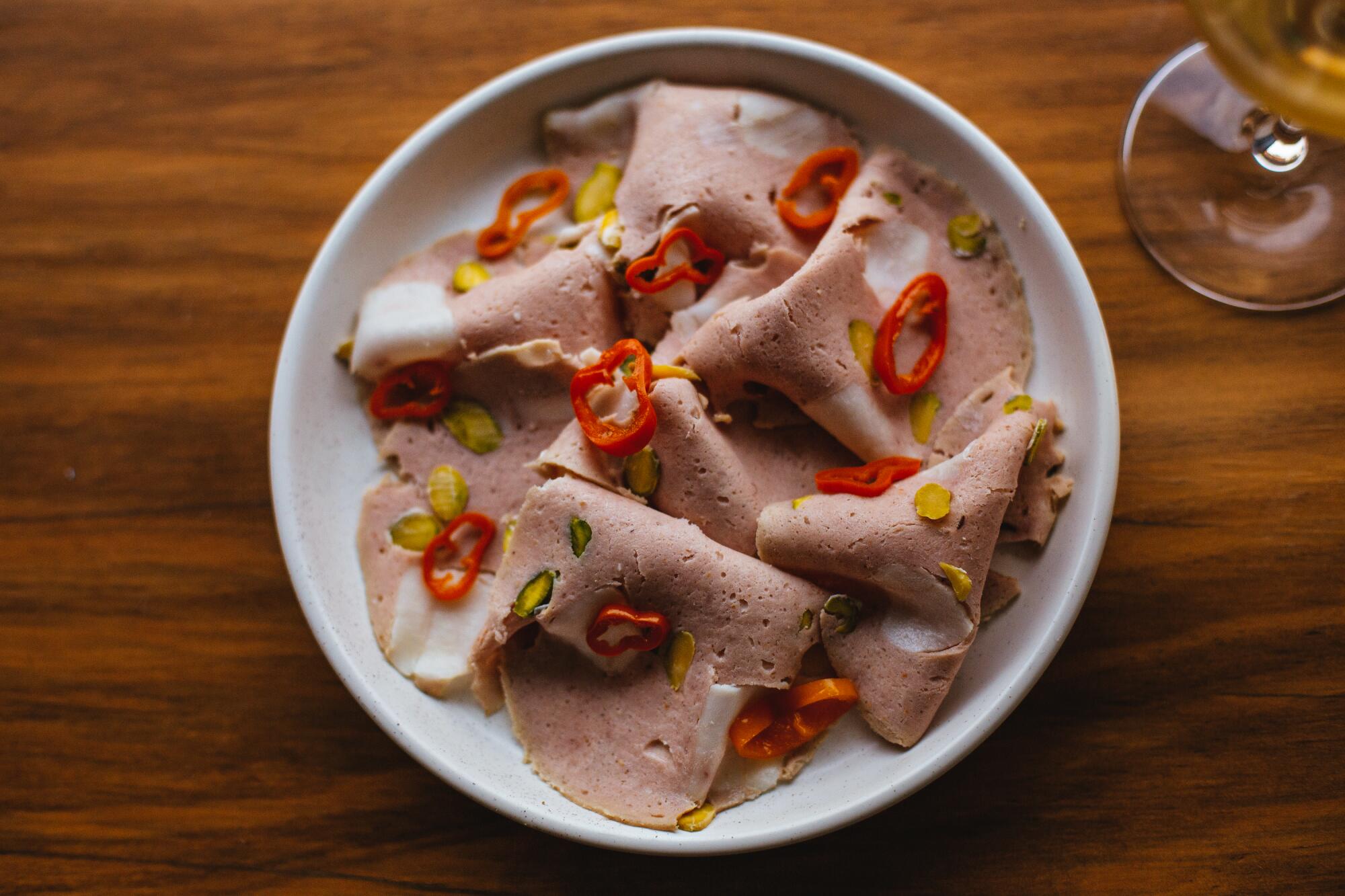
More to Read
Eat your way across L.A.
Get our weekly Tasting Notes newsletter for reviews, news and more.
You may occasionally receive promotional content from the Los Angeles Times.
